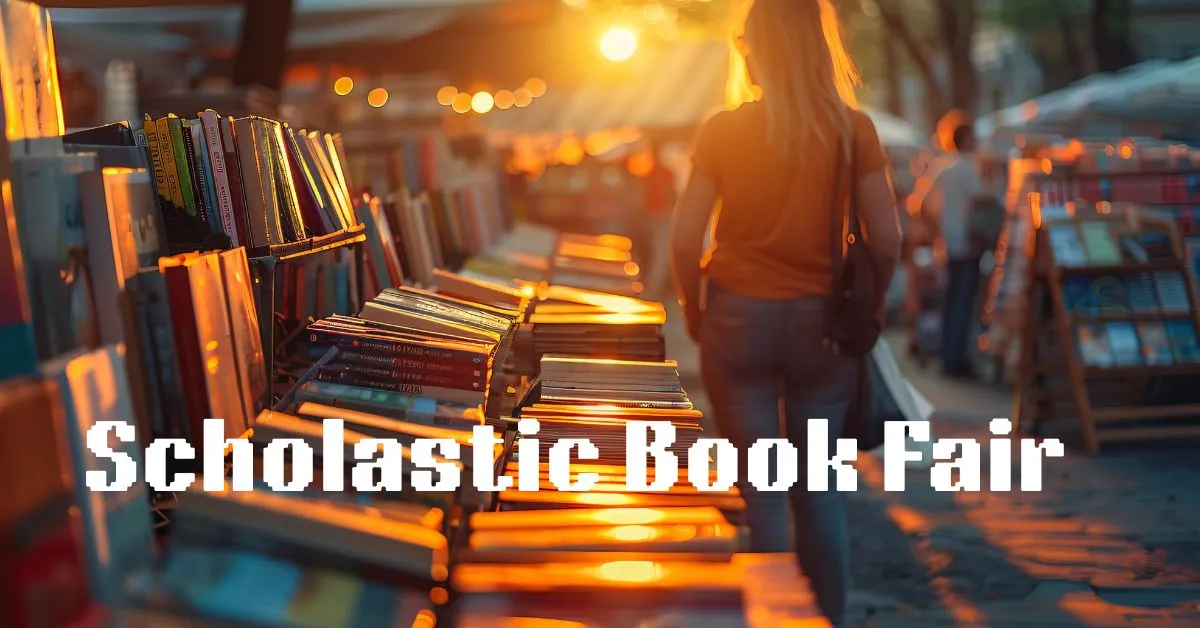Scholastic Book Fair: A Magical Tradition That Inspires Lifelong Readers
If you’ve ever walked into a school gym filled with colorful tables stacked high with books, you probably remember the Scholastic Book Fair. For many children, this event is pure magic — a time when reading feels like an adventure, and every story promises a new world to explore. Parents volunteer, teachers smile proudly, and kids excitedly clutch their wish lists filled with titles they can’t wait to own.
But beyond the excitement and nostalgia, the Scholastic Book Fair is much more than a temporary pop-up store. It’s an educational movement that promotes literacy, builds community spirit, and gives children a sense of independence and joy through reading. Let’s take a deeper look at where this beloved tradition came from, why it’s so impactful, and how it continues to evolve in today’s digital world.
The Origins and Evolution of the Scholastic Book Fair
The story of the Scholastic Book Fair begins decades ago with a simple mission: to make books accessible to all children, regardless of background. Founded under the larger umbrella of Scholastic Inc., the book fair program started gaining popularity in U.S. schools during the 1980s.
The idea was straightforward yet powerful — bring a mini bookstore directly into schools, allowing children to discover and purchase books in a familiar, supportive environment. Teachers and librarians quickly realized that the event wasn’t just about sales; it was about creating a culture of reading.
As the years went by, the fair evolved from modest book tables in classrooms to full-fledged reading festivals with posters, activities, and themed decorations. Today, Scholastic Book Fairs operate not only in the United States but also in several other countries, helping schools raise funds and children find books they love.
What makes it truly special is that it’s not run like a typical commercial event. Every fair is community-driven — powered by volunteers, guided by educators, and centered on the students’ enthusiasm.
The Magic Behind the Experience
You might be wondering what makes the Scholastic Book Fair so memorable for both kids and adults. The answer lies in its unique atmosphere — a blend of excitement, independence, and discovery that few other school events can match.
A Celebration of Reading
For students, the fair isn’t just about buying books; it’s about exploring new stories. From adventure and mystery to fantasy and science fiction, every shelf offers a chance to dive into a new world. The fair often includes displays for popular series like Dog Man, Harry Potter, and The Baby-Sitters Club, ensuring there’s something for every type of reader.
Empowering Young Readers
One of the fair’s biggest strengths is how it empowers kids to make their own choices. For many, it’s their first experience buying a book with their own money. That small act of independence helps them feel confident and engaged in their learning journey. It teaches financial awareness and decision-making — lessons that extend beyond reading.
Building Community and Connection
Teachers, parents, and librarians all play a part in making the fair successful. Parents volunteer to organize and assist, while educators guide students toward age-appropriate or curriculum-supporting books. The result is a true community event that connects families through the shared goal of literacy and learning.
Educational Value:
The Scholastic Book Fair isn’t just a feel-good tradition — it’s an educational tool with real impact. Schools use it as an opportunity to promote reading comprehension, critical thinking, and vocabulary development.
Encouraging Reading for Pleasure
Research consistently shows that children who read for pleasure are more likely to succeed academically. The fair sparks that interest by offering a wide variety of engaging titles — from graphic novels to nonfiction books about space, history, and animals.
Supporting School Libraries
A portion of every purchase usually goes back to the hosting school, often in the form of book credits or direct funds. These resources help schools restock their libraries, purchase new titles, or improve literacy programs. In this way, the fair is both a fundraiser and an educational investment.
Bridging the Reading Gap
For students who may not have easy access to bookstores or libraries outside of school, the Scholastic Book Fair becomes a crucial opportunity to explore literature. It brings the bookstore to them, ensuring every child — regardless of background — has a chance to discover books they love.
How Scholastic Book Fairs Are Organized
Ever wondered what goes on behind the scenes to make the fair possible? It’s a well-coordinated effort that combines planning, logistics, and a lot of enthusiasm.
Planning and Scheduling
Schools typically schedule their fairs months in advance. Scholastic provides catalogs and promotional materials to help organizers choose themes and book selections.
Volunteer Coordination
Parents and teachers sign up to manage setup, assist during sales, and help younger students navigate the displays. Their involvement transforms the event into a collaborative effort that feels personal and supportive.
Themed Setup and Decor
Each fair often follows a creative theme — such as “Reading Under the Stars” or “Wild About Books.” Colorful posters, banners, and props create a fun, welcoming environment that draws students in.
Book Selection and Promotion
The book selection is carefully curated to reflect popular genres, current trends, and educational value. Scholastic representatives often include age-appropriate titles, bilingual books, and activity kits.
Sales and Rewards
Many fairs include incentive programs, like reading challenges or “All for Books” donation drives. These initiatives encourage participation and community giving while keeping the focus on literacy.
The Emotional Impact:
Ask any adult who attended a Scholastic Book Fair as a child, and you’ll likely see a smile of nostalgia. The fair leaves a lasting emotional imprint because it’s tied to curiosity, excitement, and belonging.
Childhood Nostalgia
For many, those shiny posters, erasers shaped like animals, and colorful bookmarks were as exciting as the books themselves. These small details make the experience joyful and memorable.
A Sense of Ownership
Owning a book chosen by oneself fosters pride and a deeper connection to reading. That personal investment often sparks a habit that lasts well into adulthood.
Family Involvement
Parents often share in the excitement — attending the fair with their kids, recommending favorites from their own childhoods, and watching their children fall in love with reading.
Digital Transformation:
In recent years, the Scholastic Book Fair has embraced technology to adapt to modern needs. When schools shifted to remote learning during the pandemic, Scholastic launched virtual book fairs, allowing families to browse and purchase books online.
Hybrid and Online Fairs
Today, many schools combine in-person and online fairs. Students can explore physical copies at school and families can order from home — ensuring everyone can participate.
Sustainability Efforts
Modern fairs also focus on sustainability, using eco-friendly materials and minimizing waste. Some schools even use reusable decorations and digital catalogs instead of printed flyers.
Expanding Diversity and Inclusion
Another major advancement has been the effort to include diverse voices and stories. The fair now highlights books featuring authors and characters from different backgrounds, ensuring every child can see themselves represented in literature.
Beyond Books:
While books remain at the center of every Scholastic Book Fair, the event also inspires creativity, imagination, and social engagement.
Inspiring Future Writers and Artists
Many authors credit their early love of reading — and even their decision to write — to book fairs. When children encounter engaging stories at a young age, they often dream of creating their own.
Promoting Empathy and Imagination
Through storytelling, kids learn empathy, cultural awareness, and critical thinking. The fair serves as a gateway to understanding others’ perspectives and expanding the imagination.
Strengthening School Identity
Hosting a successful book fair enhances school culture. It reminds students that learning isn’t limited to classrooms — it’s something joyful and shared.
Conclusion:
The Scholastic Book Fair is far more than a nostalgic school event — it’s a celebration of imagination, community, and lifelong learning. It brings together students, educators, and families in a shared mission: to make reading joyful, accessible, and meaningful.
In a world dominated by screens and fast-paced distractions, the book fair reminds us of the simple magic that happens when a child opens a book for the first time. That spark of curiosity can shape a lifetime of discovery.
So, whether you’re a parent volunteering for the first time, a teacher planning the event, or a grown-up reminiscing about your favorite fair memory — remember that each page turned keeps the love of reading alive for the next generation.
FAQs About the Scholastic Book Fair
1. What is the main purpose of the Scholastic Book Fair?
Its primary goal is to promote literacy and make reading exciting for children. It encourages them to explore books, discover new genres, and develop a lifelong love of reading.
2. Do schools make money from Scholastic Book Fairs?
Yes! A portion of sales returns to the school in the form of book credits or direct funds, which can be used to support libraries, classrooms, or reading programs.
3. How can parents get involved?
Parents can volunteer during setup, assist children at the fair, donate to literacy drives, or help promote reading at home. Their involvement makes the event stronger and more community-oriented.
4. What types of books are usually available?
Fairs include a mix of fiction, nonfiction, graphic novels, picture books, and educational titles. There’s something for every reading level and interest.
5. Are there online versions of the fair?
Absolutely. Many schools now host virtual or hybrid fairs, allowing students and families to browse and buy books online while still supporting their school’s literacy goals.



